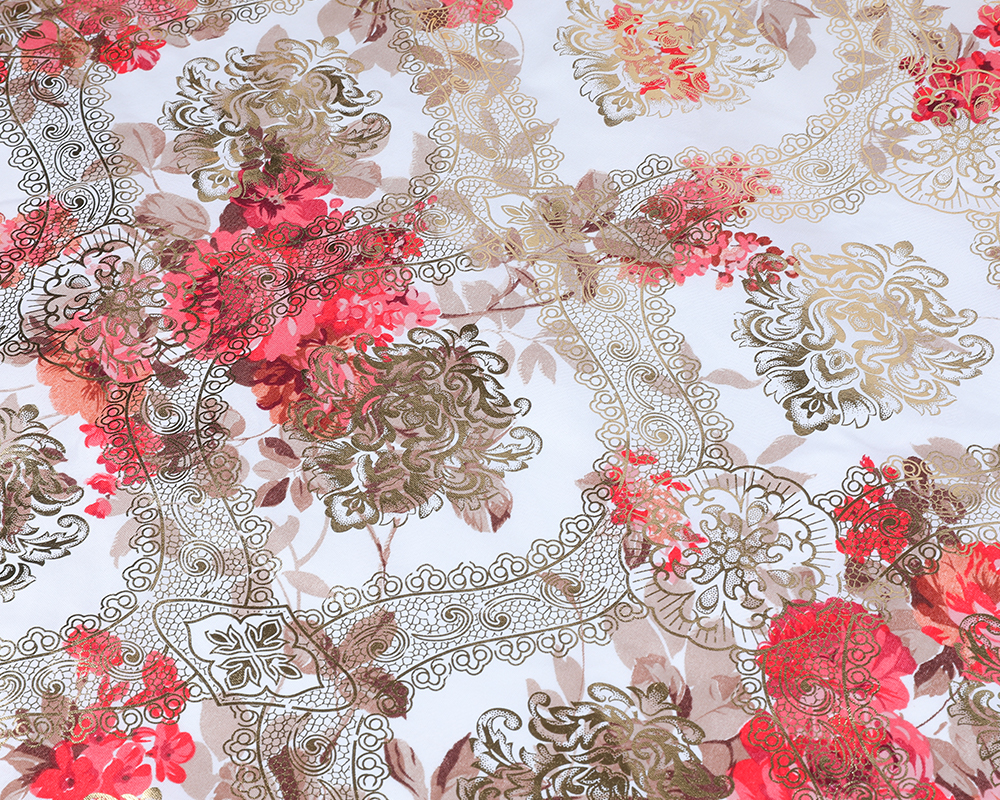Search...
The relationship between the touch (feel) and moisture-wicking performance of 100% polyester printed fabric is closely interconnected, as both qualities are influenced by the fabric's structure, weave, and finish. Here's how they relate:
Polyester naturally has a smooth and slightly slick feel because of its synthetic nature. This texture helps in moisture-wicking, as the smooth surface allows sweat and moisture to be quickly drawn away from the skin and spread across the fabric for faster evaporation.
The moisture-wicking ability of polyester enhances the dry and comfortable feeling of the fabric, even during intense physical activity. The fabric's smooth texture helps maintain this dry feel, as it does not absorb moisture like cotton, which can feel damp when wet.
The way polyester is woven or knitted can influence both its feel and moisture-wicking performance. For example, a finely woven or tightly knit polyester may feel more structured and less soft but will effectively wick moisture away due to the capillary action within the fabric’s fibers.
When polyester is brushed or given a textured finish, it can feel softer and more like natural fibers. However, these finishes may slightly reduce the moisture-wicking efficiency, as they can trap more air and moisture close to the skin. Despite this, many brushed polyesters are engineered to retain moisture-wicking properties while improving softness.
The method used to print on polyester can slightly affect the fabric's feel and moisture management. For example, sublimation printing, which is common with polyester, does not alter the fabric's moisture-wicking properties or texture significantly, maintaining both its smooth feel and moisture control.

Heavy or thick prints might slightly reduce the breathability and moisture-wicking ability in the printed areas, potentially making those spots feel warmer or less dry compared to non-printed areas.
Polyester's smooth, synthetic feel is often associated with lower breathability compared to natural fibers. However, this smoothness contributes to its moisture-wicking performance by not retaining moisture, which can be advantageous in activewear where keeping dry is crucial.
The balance between a fabric's smoothness and moisture management is key to comfort. In cooler conditions, polyester's moisture-wicking properties keep the fabric dry and comfortable, while in hot, humid conditions, the lack of breathability may cause the fabric to feel sticky, despite its ability to wick moisture.
Often, polyester is blended with other fibers like spandex or cotton to enhance comfort without sacrificing moisture-wicking performance. These blends can provide a softer touch while retaining the moisture management capabilities of pure polyester.
The touch and moisture-wicking performance of 100% polyester printed fabric are closely linked. The fabric's smooth and slightly synthetic feel is a direct result of its structure, which also enables efficient moisture-wicking. While this makes polyester effective at keeping the wearer dry and comfortable, especially in active or performance settings, it may also lead to a less breathable feel, potentially causing discomfort in certain conditions. The balance between these properties makes polyester a popular choice for activewear, where moisture management is prioritized.

 English
English
 中文简体
中文简体
 Español
Español





.jpg?imageView2/2/format/jp2)






